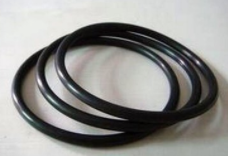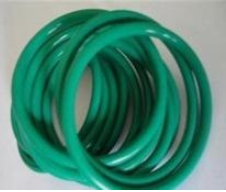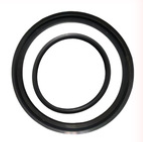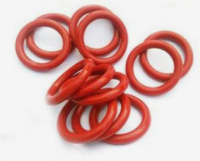Differences in Seal Ring Materials
Huachuang measurement and control Huachuang measurement and Control Technology Co., Ltd 2025-06-06 10:59
Nitrile Butadiene Rubber (NBR)
Nitrile butadiene rubber (NBR) is an elastomer synthesized from acrylonitrile and butadiene, offering excellent resistance to oils and fuels. However, its structure contains carbon-carbon double bonds, making it vulnerable to erosion by heat, oxygen, ozone, and strong chemicals. As such, it is unsuitable for many pump and valve applications. NBR has an operating temperature range of -40°C to +100°C (with some grades reaching 120°C), performing best in sealed oil-based systems. It is ideal for static seals in components like solenoid valves and pneumatic parts, where movement is minimal. While NBR boasts excellent oil resistance, chemical stability, and processability, its performance in acidic gasoline and high-temperature (150°C) environments is inferior to fluoroelastomers and acrylic latex over long-term use.

Fluororubber (FKM)
Fluororubber (FKM) excels in resistance to chemicals, oils, fuels, and high temperatures. Thanks to its strong carbon-fluorine bonds, it easily withstands heat, oxidation, and UV radiation. FKM has an operating temperature range of -20°C to +250°C (with some grades reaching 300°C), making it highly suitable for dynamic seals in pumps, valves, and seal rings. Note: Avoid steam exposure! When steam penetrates FKM, it condenses into water internally, causing swelling. Over time, the material hardens like an old sponge, often requiring it to be pried out piece by piece during maintenance—removing it intact is nearly impossible. With outstanding flame retardancy, airtightness, and resistance to high temperatures, oils, solvents, chemicals, and weathering, FKM is widely used in automotive, chemical processing, aerospace, and various industrial applications. Notably, fluoroelastomer seals are the only materials suitable for high-vacuum conditions (below 1.33×10⁻⁷ Pa)—other rubbers cannot be used for sealing in such environments.

Ethylene propylene diene monomer (EPDM) is a versatile synthetic rubber renowned for its excellent heat resistance, ozone resistance, UV resistance, and weatherability. It is typically vulcanized with peroxides to cross-link the rubber, enhancing its strength in high-temperature and outdoor environments. EPDM has an operating temperature range of -40°C to +150°C, making it suitable for applications involving water, steam, and weak acids. Critical limitation: EPDM must never be used with oils, fuels, or hydrocarbons. Exposure to these substances causes it to swell, soften, and degrade faster than a banana in a heatwave—certainly not ideal for sealing high-performance machinery! During overhauls, removing EPDM can be as tedious as peeling gum from a shoe sole, a slow and messy process. EPDM’s resistance to water vapor is particularly notable, surpassing its heat resistance: after nearly 100 hours in 230°C superheated steam, its appearance remains unchanged. In contrast, fluoroelastomers, silicone rubbers, fluorosilicone rubbers, butyl rubber, NBR, and natural rubber show significant degradation under the same conditions.

Chloroprene Rubber (CR Neoprene)
Chloroprene rubber (CR Neoprene) offers good resistance to weather, ozone, UV radiation, and moderate chemicals. Peroxide vulcanization gives it durability in static seal applications. With an operating temperature range of -40°C to +120°C, CR Neoprene is well-suited for mild chemical environments and outdoor use. However, it performs poorly in pumps or valves: exposure to oils, fuels, or high temperatures causes swelling, softening, and degradation. Its low resistance to abrasion and tearing also makes it unsuitable for dynamic environments. Conversely, it excels in electrical enclosures, ideal for gaskets and low-pressure seals—though if used in pumps, removal will resemble peeling off stubborn stickers, piece by piece! CR Neoprene exhibits good chemical stability and maintains flexibility across a broad temperature range.

If you have any needs, please contact us!
Contact number: 400-851-0898

WhatsApp 173-6757-2262

17367572262

South of Puhui Street, west of Guangsheng East Road, High tech Zone, Fengnan District, Tangshan City, Hebei Province

Friendship link





Tips
Submitted successfully
Determine